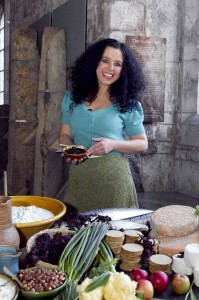The fermented and wild foods St Patrick dined on in the 5th century are back among the hottest food trends internationally, according to UCC food historian Regina Sexton.
“This was neither a throw-away nor a take-away society and people took good care to preserve and conserve for future use, foods that could not be consumed immediately.”
What was St Patrick’s diet like? “High in fibre, Omega-3 fatty acids, fermented milks, low GI grains, protein, minerals and vitamins, but low in sugars and meat. It is safe to say that obesity was not a problem in those days, and that the fare was seasonal, wholesome and modest by today’s standards,” says Sexton.
St Patrick’s diet was rich in oily fish like salmon, oats, seaweed, nuts and wild vegetables, soured and fermented milks and curds but a little in the way of meat and full fat cheeses and butter. “Is this the latest super food diet, restaurant trend or is it just the diet of Ireland’s national saint?”
Items like soured milk drinks, oatmeal, seaweeds and wild fruits and vegetables were staples in the Irish early medieval diet, according to Sexton and they are also some of the foods recommended by contemporary nutritionists for optimal health.
“Much of this is known because with the coming of Christianity, monastic settlements encouraged learning and record keeping and those records have come down to us. Ironically, much of the food available then, is what we call ‘health food’ now, which comes of course, at a premium price!”
A wide range of wild foods, notably watercress and wild garlic, nature’s way of garnishing the delights of the countryside, was also on the menu, and if this didn’t whet his appetite, there were hen and goose eggs, honey, fish, butter, curds, seaweeds, apples and dairy as well. The rivers were flush with salmon, trout and eel, and hard-cured pork as well as other meats, were to be had too.
Cereals, most commonly oats and barley, a little rye together with more prestigious and high-ranking wheat, were used in the production of flat breads and it is also likely that leavened wheat loaves were on offer. Various wet preparations such as porridge, gruel, meal pastes and pottages as well as cereal-milk and fruit-nut combinations were also being eaten on the island when the young Patrick arrived.
“St Patrick would have consumed lots of fresh milk, sour milk, thickened milk, colostrum, curds, flavoured curd mixtures and soft cheese, particularly during the summer months with butter and hard cheeses saved for the leaner months of winter and spring,” she added.
For further information contact Regina Sexton M: 087 6134500 or Ruth Mc Donnell, UCC M: 086-0468950









